Research Article
A DESK STUDY ON THE SIGNIFICANT STRANDS THAT BESTOWED THE WELLNESS AND WELFARE OF WINE TOURISM
3727
Views & Citations2727
Likes & Shares
Objective: Wine Tourism has emerged as a potentially important factor in Travel and Tourism’s performance and function. The objective of this paper is to examine the current state of promotion and welfare of wine tourism and factors affecting them in through a review of the literature. The review focuses on four determinants and their effect on promotion and welfare of Wine tourism in.
Design: A systematic review of Benchmarking, Viticulture and Oenology, Special Interest Tourism (SIT) & Culinary Tourism and Global culture and Practices about promotion and welfare of wine tourism was performed.
Review Methods: The literature was derived from the published research articles. The selection criteria for the review included the studies that were; written in English, related to promotion and welfare of wine tourism in the hospitality sector, Marketing in the hospitality sector.
Results: The literature review identified four distinct lines of research that have focused on promotion and welfare of Wine tourism in. Wine tourism – based articles referenced in this paper, a sample of 30 studies reported on the examination of antecedents of satisfaction among guests. Key findings suggest that all the four factors that are; Benchmarking, Viticulture and Oenology, Special Interest Tourism (SIT) & Culinary Tourism and Global culture and Practices significantly impact on Wine tourism.
Conclusions: The study of Factors contributing to the promotion and welfare of Wine tourism helps in the Tour providers to build an image in the minds of their guests and creates awareness for Wine Tourism.
Keywords: Wine Tourism, Benchmarking, Viticulture and Oenology, Special Interest Tourism (SIT), Culinary Tourism and Global culture and Practices
INTRODUCTION
The tourism and traveler goal appeal can be seen as collaboration between tourism supply and tourism request which relies upon the connectivity of the accessible attractions and the apparent significance of such attractions. This planned structure could be utilized as a basic leadership device in arranging, promoting and creating fitting asset portion systems. Here, tourism contributes tourism potential as a subjective material, a gauge of certain prejudiced conceivable outcomes and incorporates "administrations" as a current part and a quick articulation of the supply. Be that as it may, tourism supply unaccompanied doesn’t clarify tourism improvement or the sufficiency of tourism request including vacationer landings, number of overnights, mean stay length, guest assess, general spending plan, inspiration, and so on (Michel rod, 2012).
India has a rich heritage in tourism. Tourism gains thirty three percent of the outside trade of India. It likewise utilizes the most noteworthy number of workers. As indicated by the World Tourism Organization, by the year 2025, it is normal that India will lead the way in the tourism business in South Asia.
The development of Wine tourism is said to have a positive effect on the region, with possible beneficial effect for growers in the region. Be that as it may, for the Wine tourism to be truly effective association at both the vineyard level and at the regional level is required. Similarly, many studies have also been conducted on the benefits of Wine tourism on the Wine producers. The origin of production of Wine has tremendous relevance of Wine. There are multidimensional angles in mix of interrelated Wine scape components that characterize the Wine's one of a kind tangible and material attributes. A consumer's basic leadership process and significance of the Wine area frequently consolidate exceptionally unpredictable and advanced frameworks of multi-dimensional features. It includes various components which the shopper access from or store in the memory each time they collaborate with the Wine promoting and attempt a Wine buy or utilization choice. There have been different reviews previously that have endeavoured to see complicatedly the part of the Wine considers, Wine creation and subsequently the learning of crucial segment of developing the significance of Wine area of starting point in connection to the purchaser purchasing basic leadership handle. The primary level of Wine training is the angle to investigate in the developing advancement of shopper's self-instruction in Wine and data looking for procedure to do as such. Basically, as shoppers increment their contribution and connection with Wine tourism for doing this, so does the level of significance they put on the on the Wine's area root affecting straightforwardly on the basic leadership handle. One needs to comprehend the significance of the two perspectives empowers Wine advertisers to separate item offerings additionally actualize system through Wine learning and Wine tourism to constantly build the significance and familiarity with a Wine's area of tourism. Among many products, Wine is an interesting product as it is one that is marketed and regulated by the state at the same moment (Leonardo casini, 2009).
There is a comprehension of purchaser conduct in connection to the ways of life and psychographics, motivational components and item association. These are the real contemplations, and variables behind the possibility of purchasers devouring Wine. Various Wine specialists have as of now remarked on the outcomes that have been explored as for the Wine customer that influence the Wine purchasing basic leadership handle. There are additionally worries at the worldwide level where the business is ending up noticeably to a great degree aggressive, where there is persistent development with regards to size and piece of the pie, while the new consumers continue going into the business sectors and set up customers occupy their consideration towards option mixed drinks. Wine tourism is a continuous creating research point, and it has turned out to be vital for both scholastics and the Wine business. This pattern would not astound, in the radiance of its real significance to development and achievement of numerous little Wineries. Significant favourable circumstances were driven from visits to vineyards, especially regarding little Wineries: a chance to attempt new item, assemble mark faithfulness, increment edges, extra deals outlet, promoting knowledge and a method for instructing shoppers about Wine (Tiziana de magistris, 2011). Different reviews demonstrated that viticulture and vineyard tourism is an initiator for local improvement, draws in new ventures to the area and increments local business and tourism (Forbes, 2012).
METHODOLOGY
The objective of this paper is to examine the current state of Wine Tourism and factors contributing to the promotion and welfare of Wine tourism through a review of the literature. The review focuses on four determinants and their contribution on Wine Tourism. The literature was derived from the published research articles. The selection criteria for the review included the studies that were; written in English, related to guest satisfaction in the hospitality sector, wine tourism, tourism performance in the hospitality sector. Research articles were collected from, International Journal of Wine Marketing, Journal of brand management, International Journal of Wine Business Research, Qualitative market research: an international Journal of Hospitality Management, Journal of Services Marketing Etc. journals. Literature review included key words such as Wine tourism, guest engagement, preference, wine development, and performance.
Due to restricted amount of research that has examined factors contributing to the promotion and welfare of Wine tourism in, published research in independent variables were also reviewed. The sample consisted of peer reviewed research articles published in hospitality, marketing, and tourism journals from 1986 – 2019. Published research articles were reviewed, of which 30 are referenced in the paper. From the point of literature review, a sample of 30 studies reporting on the examination of factors contributing to the promotion and welfare of Wine tourism in. The aim of the study, sample, methodology and key findings of these 30 studies has been summarized in table 1.
FINDINGS
The term Wine tourism from the context of Hospitality emerged lately in 21st century. The following sections begin with the dimension of the independent variable towards the promotion and welfare of wine tourism that are Benchmarking, Viticulture and Oenology, Special Interest Tourism (SIT) & Culinary Tourism and Global culture and Practices.
BENCHMARKING
In management literature, Benchmarking has become prominent business practice. Organizations such as “Xerox” have pioneered in its formulation and Implementation besides setting performance improvements (Forbes, 2012)(Beverland, 2000). Benchmarking is a term originally used by surveyors to designate”....a point scored that defines an elevation known or accepted from that may be deducted the other elevations (Forbes, 2012),(Donald getz, 1999). Benchmarking is widely recognized as a management tool currently is practiced that is no longer disputed, but acts as a standard tool. Planning a benchmarking is possible, it is basically an assessment of their own organizations comparing their performance with the standards of the best organizations in the area of activity or even a different area, so that the information obtained is the best source of increasing their own performance in a competitive market place.
In recent years much has been written in the management literature about the multitude of advantages an organization might enjoy from the systematic use of benchmarking. Several books and articles make quite a case for the contributions that benchmarking has made in saving some companies such as Xerox, a pioneer in its development and application, from extinction, as well as the benefits in performance improvements for many others (Martin a. o'neill, 2004)(Rrick a fraser, 2008). In this context, benchmarking is defined as the systematic study and comparison of a company’s key performance indicators with those of competitors and others considered the best in the function, such as quality management, inventory control, orders processing, etc. The purpose of benchmarking is to identify performance gaps and potential areas of improvement at the strategic or business process levels.
Benchmarking for long has been the idea behind finalizing on the quality of services in many organizations. Over the years, the behavioral scientists have developed quite a number of formulas that seeks to measure the input and output of a system, and the role of company in managing the system effectively and efficiently. There is a definite theoretical system for bench marking and this has been evolved over time; and the system is oriented towards the customer satisfaction and business process improvement. Multiple ideas seem to coexist when it comes to the formulation and contextualization of benchmarking.
VITICULTURE AND OENOLOGY
Viticulture and oenology Tourism are defined as “visitation to the vine yards, wineries, wine festivals and wine shows for which grape wine regions and or experiencing the attributes of a grape wine region are the prime motivating factors for the visitors” (Hall & Macionis, 1998). Wine and dine assumes importance in travelers itinerary, in fact having transformed into key motivator and at time primordial reason why people travel. In it carries the potential to develop a region, in specific a Wine region(Rrick a fraser, 2008).Wine tourism generates opportunity for employment and wealth creation, while bringing tourist from within the country and abroad. Besides spawning innovation in business small scale wine producers, it has also emerged as a prominent aspect of wine production(Guidry julie anna, 2009).In fact, regions of Australia are emphasizing on development of culinary delights, keeping in mind wine as a “bait” to bring visitors.(patrick, 1993).
It’s interesting to note in Hungary, Wine tourism happens at three levels. They are named family possessed wine basements offering wine for neighbourhood utilization and take away jugs. The next level is a tiny bed and breakfast type of accommodation in level three there is collaboration with wine producers applying jointly for growing and marketing (Micheal Hall C, 1997) The travelers have realized the fact that “wine completes culinary experiences” (Donald Getz, 2006) and immensely contribute towards learning, socializing and repose. (Dodd, 1995).
(Darina Hoffman, 2001) proposed the model wine tourism in light of unique Interest in wine propelled by the goal (wine district), movement (wine sampling) or both. In any case, little research has been done on the theme of wine tourism; however, it stands to profit the back-ward country territories(Pedraja-Iglesias, 2001). Past reviews on wine tourism has been more cantered around supply side, leaving huge hole in the investigation of traits of wine vacationers, their acquiring behavioral and attitudinal attributes (Hall and Mitchell, 2000). Wine tourism has step by step risen as a vital tourism among the nations of the world. (Westering, 2001),with respect the travelling experience, and it also produces additional motivation making the particular trip(Dodd, 1995), (Alonso, 2009) and (patrick, 1993point that the place and sort of visitor are vital to decide the free market activity of wine tourism. These tourist falls under the classification of Special Interest tourism (SIT). Such tourisms become relevant when travelers would want to go beyond the sun and sand; to embrace an entirely unique set of activities specifically connected to a destination (Mora, 2006). Tourist need variety and is fed up of regular destinations.
In order to fuel motivation of traveller’s special interest tourism, typically- wine tourism plays a significant role in attracting and drawing tourists to peripheral destinations. (Siminitras, 1995). Wine tourism is brought up emerging out of learning of characteristics that potential wine sightseers might want their "traveler item" to incorporate, frequently adjusted to their wishes and desires. (Mora, 2006). Generally, the tourists around the world are largely motivated by leisure, clubbed with cultural and heritage visits, gastronomical delights and countryside travels. All said and done, there is challenge in analysing and building (Dodd, 1995)theory around tourist motivations as they are heterogeneous groups. Their tastes, preferences, desires and expectations differ based on destination, budgets and experience; which the travelers themselves are not much aware off.
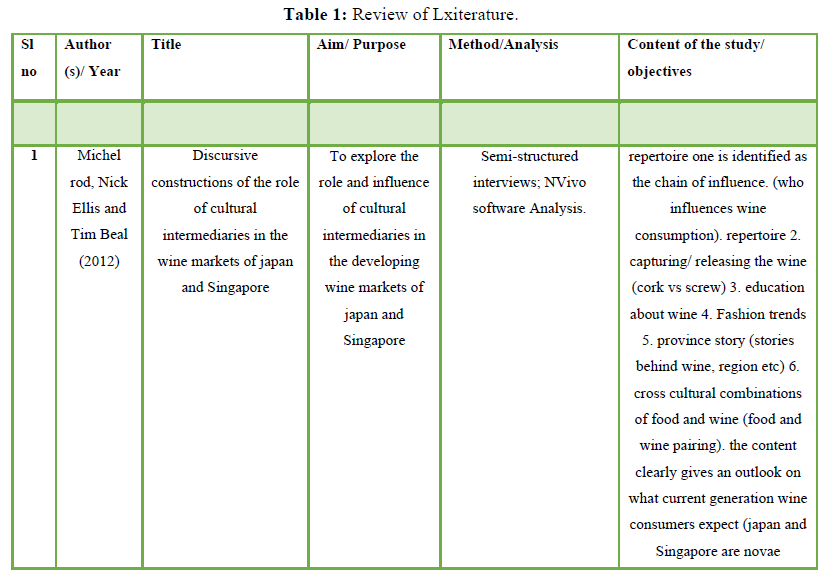
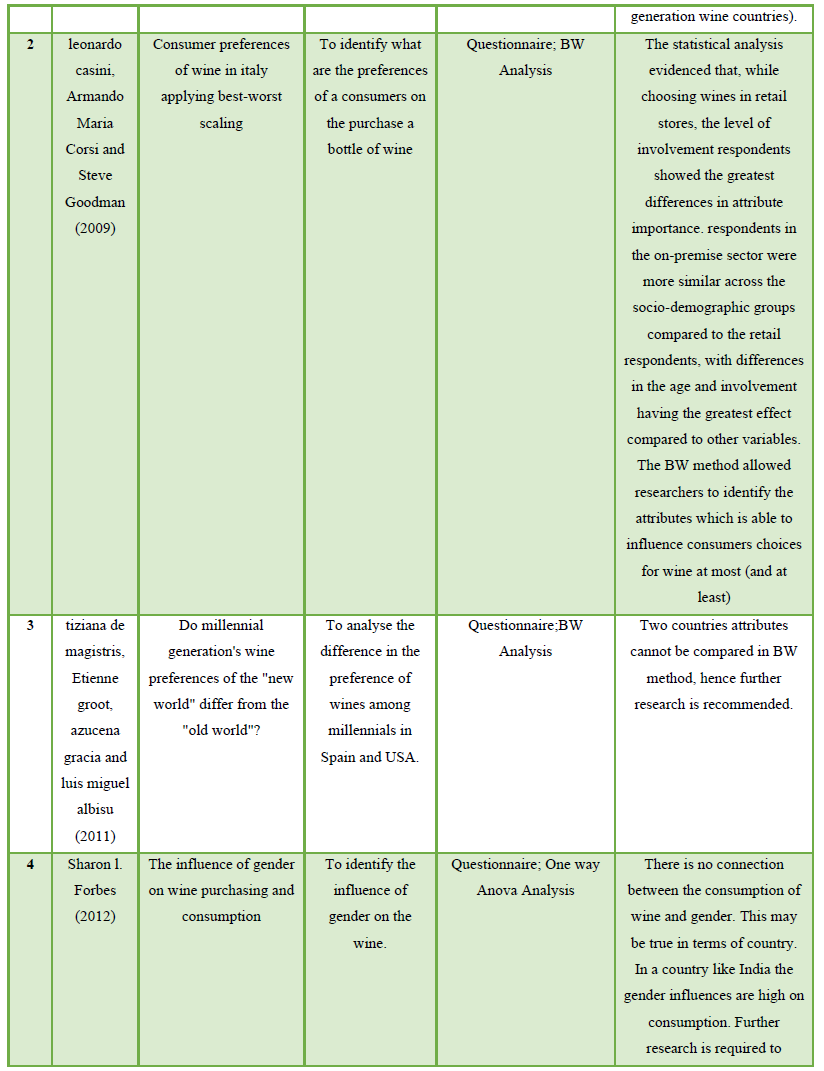
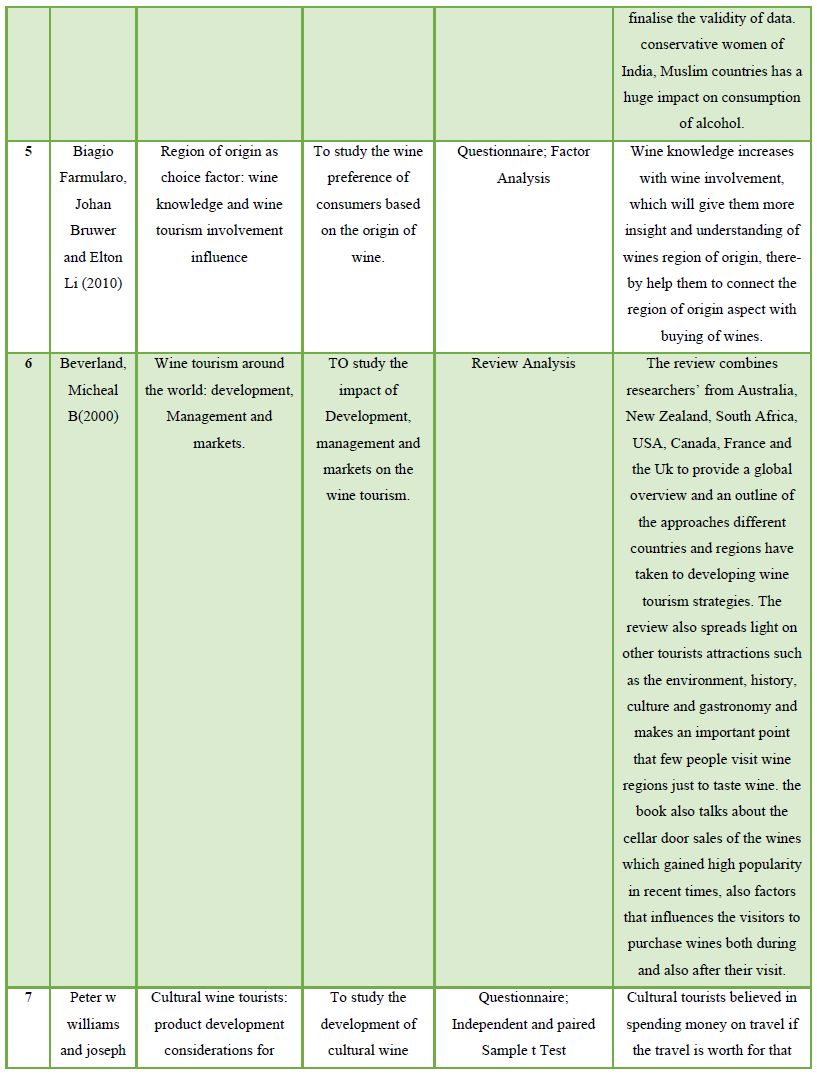
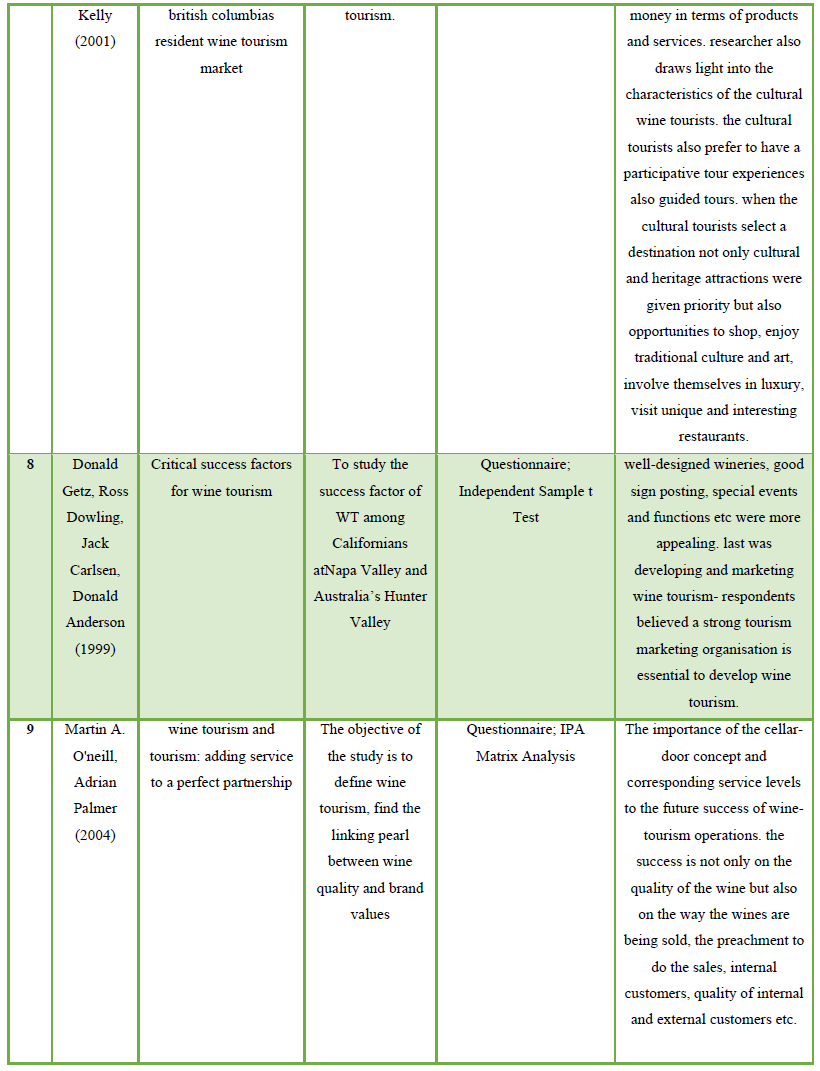
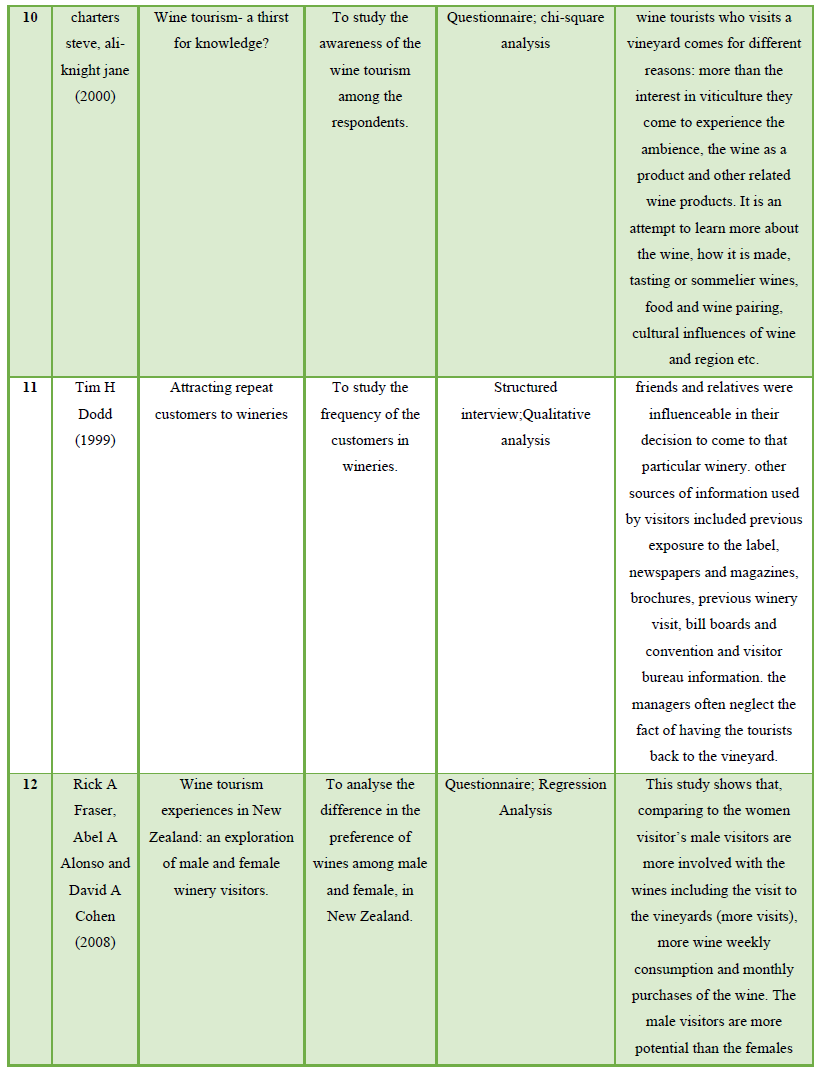
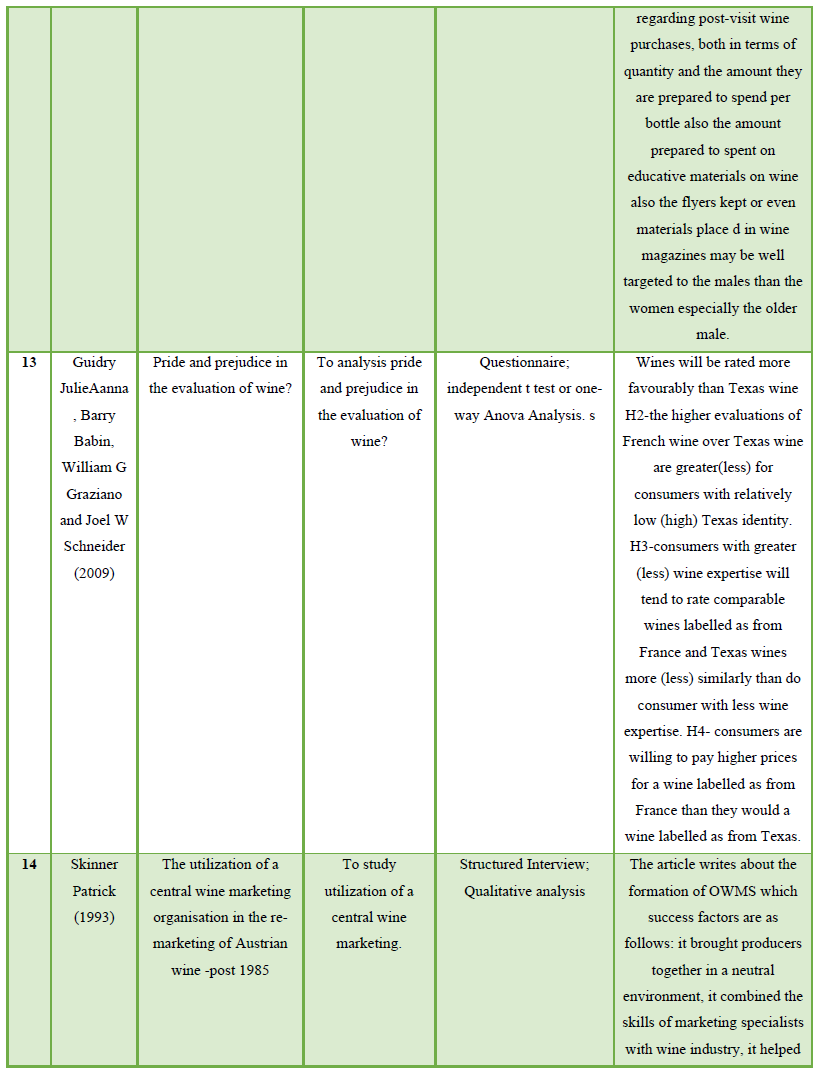
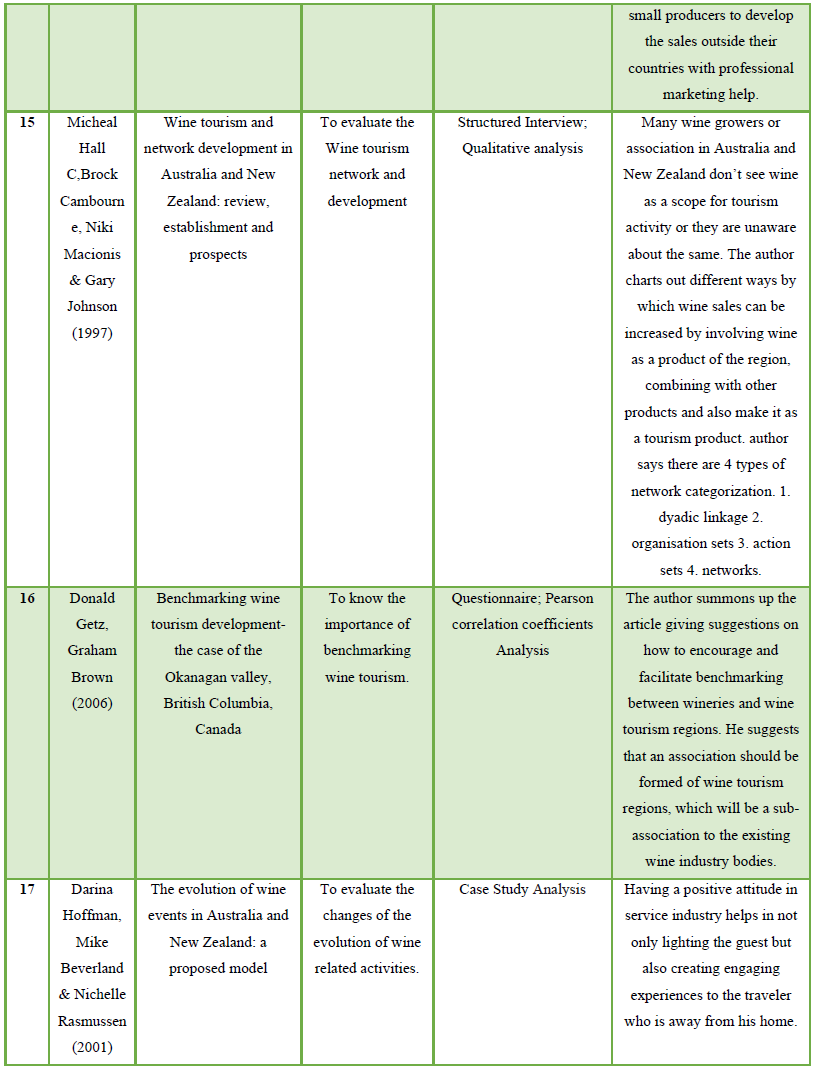
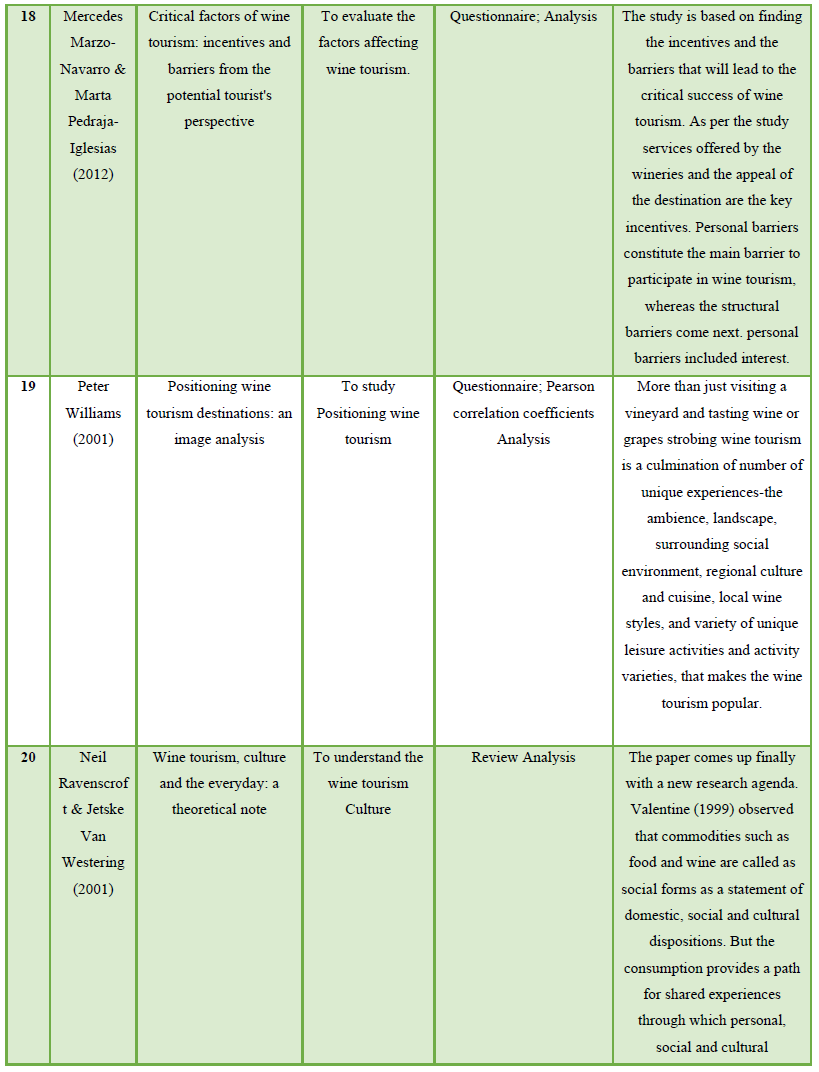
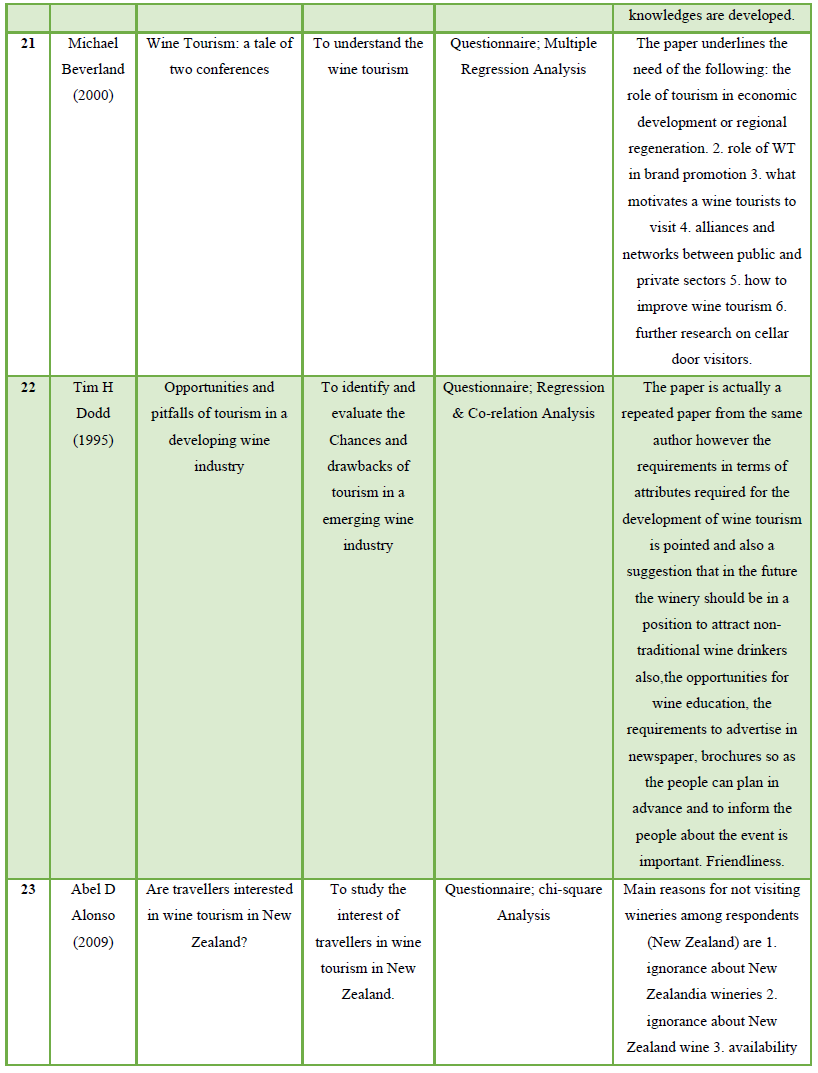
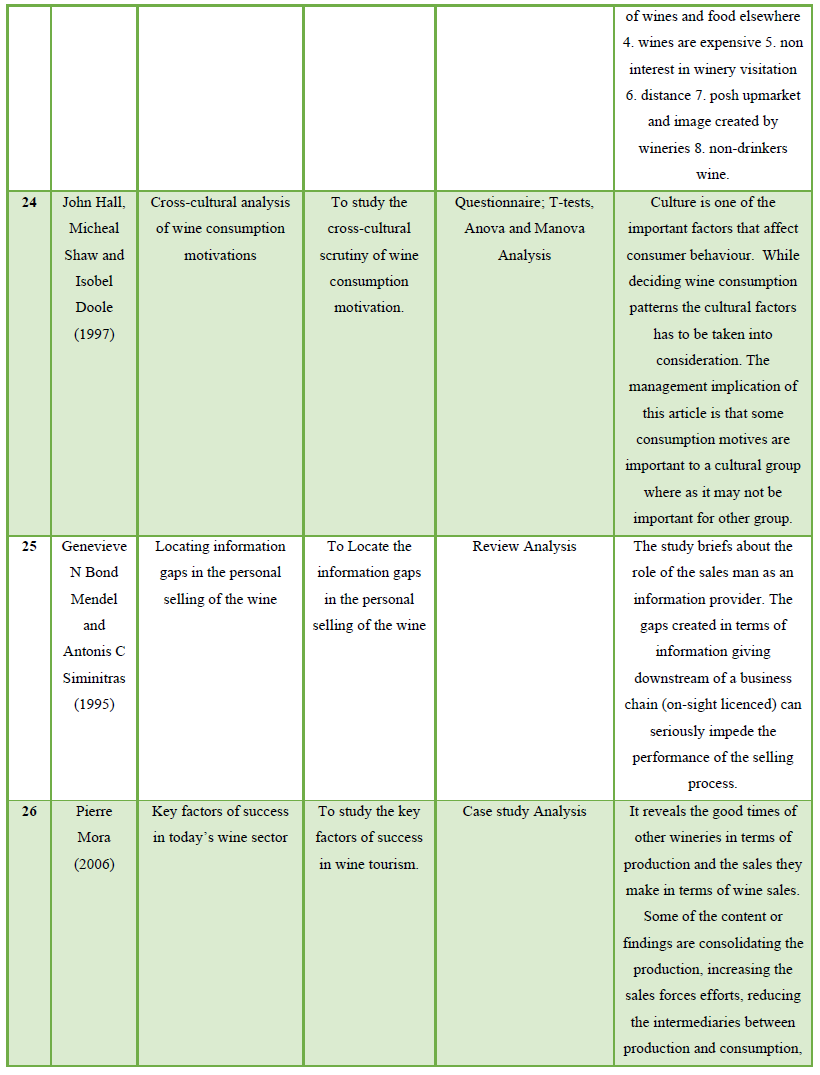
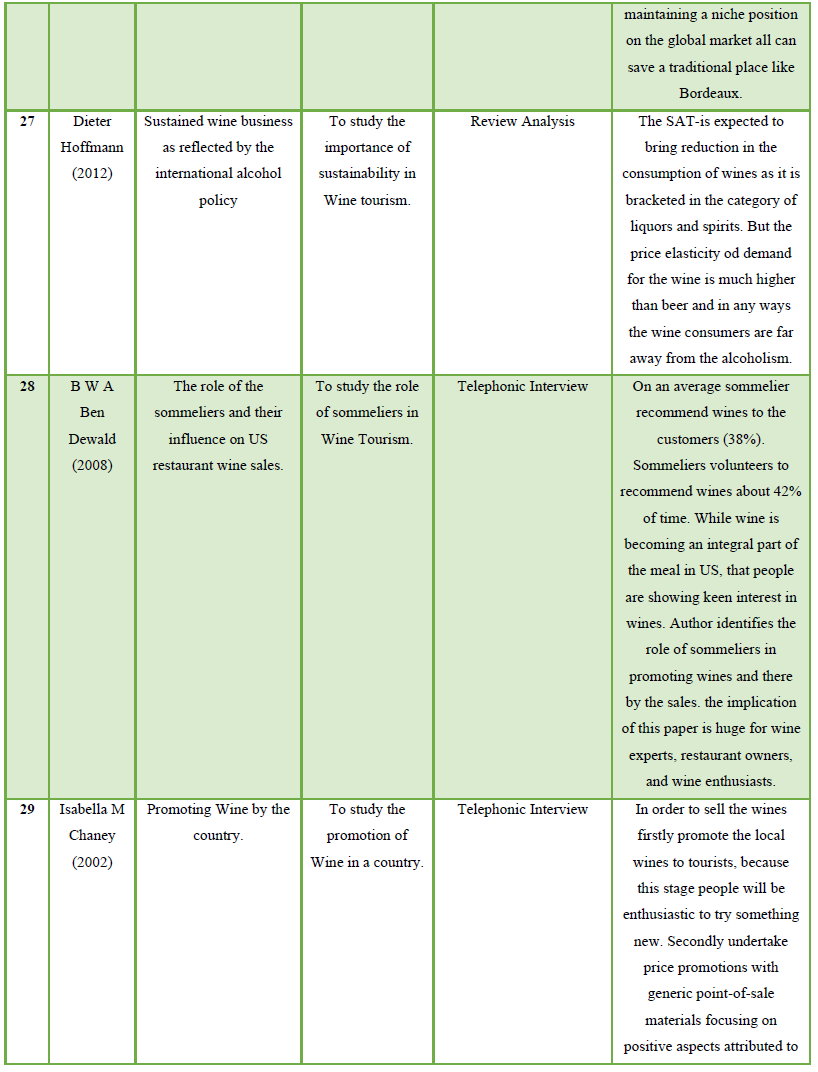
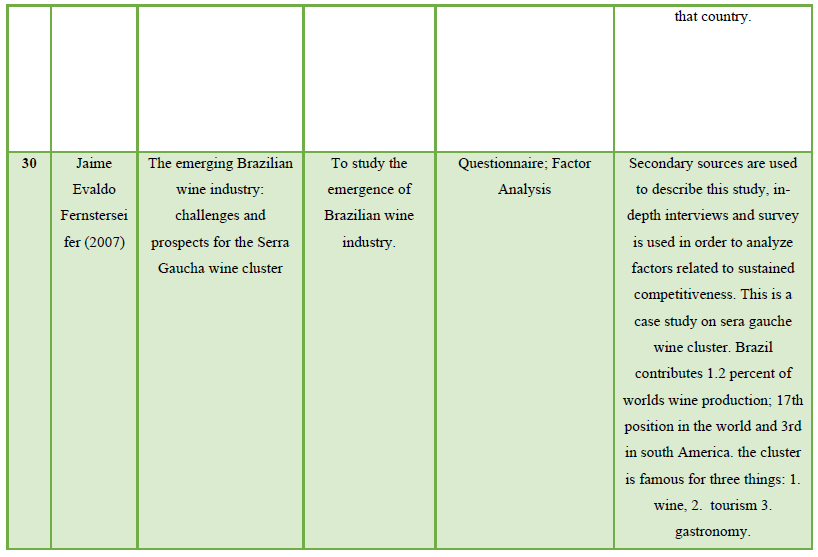












SPECIAL INTEREST TOURISM (SIT) & CULINARY TOURISM
Tourism has always been connected to the sun and beach, nonetheless other forms are witnessing considerable growth (Chaney, 2002) The other forms are those related to sports, wine, culture and adventure aptly named Special Interest Tourism (SIT). The postmodern tourism appears to drift away from the four S of tourism – “Sun, sand, sex & surf”. It now encompasses the overall life style that influences daily lives and activities (Williams, 2001). Interest tourism such as eco-tourism and wine tourism have been studied extensively; on whose basis tourists have been segmented according to their activities along the “tourist interest continuum” (Alonso, 2009) SIT surfaces when tourists are motivated to try out diverse set of activities or destinations (Westering, 2001). Evidence indicates a positive economic impact of SIT. Tourists of the SIT type are more likely to spend more, travel and participate in wider activities than the rest (Williams, 2001). Culinary tourism has been identified as “Special Interest tourism” where interest in food forms the primary reason affecting travel behaviors and fall on the upper part of the food tourism interest continuum.
GLOBAL CULTURE AND PRACTICES
It was said by (Donald getz, 1999)approaches the same problem from the point of view of consumption of wine. Wine and eating are reflexive practices. It is said to make an impact on the way people make sense of their identity and subsequently how they are able to connect this identity over a wider social context. (Rrick a fraser, 2008)Reflexivity is about the ways how people reflect upon their own actions (Williams, 2001).There seems to be an inherent reflexivity of eating and drinking is used to demonstrate the importance of consumption practices in identity formation. (Dodd, 1995)further went on to study that people were actively involved in determining many aspects of life so that the choices made in eating and drinking reflected a significant level of spatial awareness and geographic knowledge. The place at which wine is produced is taken up pretty seriously in deciding the quality of wine. For instance, (Rrick a fraser, 2008)observe the production of wine is profoundly geographic reflecting what they describe as an experience of place.
There is a limited literature on the inventories of wine location and wineries. Also there seems dearth in information about the visitors to such wineries is also limited (Donald getz, 1999). In a market place, understanding of the characteristics of a wine tourist is extremely important for product development and marketing purposes. And interestingly the insights into such deep information are more ascertained from the wine producer than the traveler(Rrick a fraser, 2008) This assumes significance especially in emerging wine tourist destinations such as India, where wine tourism is gradually gaining importance, while much of empirical study seems to still lack. Especially for Indian market, we need such information since, that will help us define an appropriate mix of wine tourism products that is most suited for the wine tourists.
DISCUSSIONS
Limitations
There are few limitations to this review of literature. The research was limited to peer-reviewed business, wine marketing, psychological, International Wine marketing, brand management and hospitality journals to find out the factors contributing to the promotion and welfare of Wine tourism. Research reports that would have met the inclusion criteria might have been available in other hospitality or non-hospitality publications.
Summary of key findings
The purpose of this review paper was to identify and understand the factors contributing to the promotion and welfare of Wine tourism. The 30 Article reviews relate to factors contributing to the promotion and welfare of Wine tourism, included in this review occurred within the framework of the Hospitality industry. The review aimed to identify the factors that would promote wine tourism. However, four key factors were identified that to determine the Wine tourism. The factors were Benchmarking, Viticulture and Oenology, Special Interest Tourism (SIT) & Culinary Tourism and Global culture and Practices.
The article reviewed in the review of literature had several other factors like colors, package value, etc. But the research review was narrow down to the above mention four factors that were Benchmarking, Viticulture and Oenology, Special Interest Tourism (SIT) & Culinary Tourism and Global culture and Practices. Table 1 explain the entire review of literature of 30 articles that were published in reputed journals. The findings of this article are in line with the ongoing research attention of factors contributing to the promotion and welfare of Wine tourism.
Recommendations for future research
Further research can be developed on understanding the importance and development of wine tourism across different part of unpopular wine tourist spots. A detailed study can be performed by conducting interviews on the wine tourists who have past experience of the same and the outcome of the study can be applied in the quantitative approach.
Analyzing factors contributing to the promotion and welfare of Wine tourism can also up bring the economy of the city and upgrade its platforms to the international standards.
CONCLUSION
Tourism is becoming an important subject for countries. It has been a key driver of economies to the extent that some countries such as Caribbean islands depend entirely upon the tourist incomes. In most countries’ tourism acts as a vehicle for development, specifically by earning foreign exchange reserves, while creating direct and indirect employment to the local populace. The trickledown effect of economy fits well when it comes to tourism. The larger spending by respective governments in tourist infrastructure leads to more indirect employment to locals when the tourists start to flow in. In the recent past, tourism has been characterized by two major trends, firstly the consolidation of traditional ideas and tourist destinations. Secondly the focus is on thematic tourism such as medial tourism, wellness tourism, spiritual tourism, culinary tourism and latest in list is the Wine tourism. According to the United Nations world tourism organization (UNWTO), China, United States of America and Germany were the highest spenders on International tourism in 2015.
Tourism in India has been moving upwards, especially after the campaign of “Incredible India” In the year 2014, Indian tourism sector generated close to about 95$ Billion. This represented 6.6 percent of GDP for the country that year. This sector is estimated to grow at an average annual rate of 7.9 percent till 2023 which makes India the third fastest growing destination over the next decade. An approximate 40 million jobs are created by the tourism sector alone annually. Wine tourism in India and particularly in Bangalore has been flourishing during the last decade. Conducive climatic conditions, appropriate soil conditions, responsive government policies and schemes, farmers support and flow of investments can be cited as good reasons for Wine tourism to thrive in Karnataka. Our study was to focus and sharpen our understanding of those significant points that contribute to the promotion and welfare of Wine tourism.
- Alonso, A.D. (2009). Are travellers interested in wine tourism in New Zealand? International Journal of Culture, Tourism and Hospitality Research 3(1), 13-24.
- Beverland, M. (2000). Wine Tourism: A tale of two conferences. International Journal of Wine Marketing 12(3), 63-74.
- Beverland, M.B. (2000). Wine tourism around the world: development, Management and markets. Journal of Wine Research 11(2), 175-178.
- Biagio Farmularo, J.B. (2010). Region of origin as choice factor: wine knowledge and wine tourism involvement influence. International Journal of Wine Business Research 22(4), 362-385.
- Chaney, I.M. (2002). Promoting Wine by the country. International Journal of Wine Marketing, 14(1), 34-40.
- Charters steve, A.K.J. (2000). Wine tourism- a thirst for knowledge? International Journal of Wine Marketing.
- Hoffman, M.B.D. (2001). The evolution of wine events in Australia and New Zealand: A proposed model. International Journal of Wine Marketing 13, 54-71.
- Dewald, B.W. (2008). The role of the sommeliers and their influence on US restaurant wine sales. International Journal of Wine Business Research 20(2), 111-123.
- Dodd, T.H. (1995). Oppurtunities and pitfalls of tourism in a developing wine industry. International Journal of Wine Marketing, 7(1), 17-23.
- Dodd, T.H. (1999). Attracting repeat customers to wineries. International Journal of Wine Marketing 11(2), 18-28.
- Getz, G.B.D. (2006). Benchmarking wine tourism development- the case of the Okanagan valley, British Columbia, Canada. International Journal of Wine Marketing 18(2), 78-97.
- Donald getz, R.D. (1999). Critical success factors for wine tourism. International Journal of Wine Marketing, 11(3), 20-43.
- Fernsterseifer, J.E. (2007). The emerging Brazilian wine industry: challenges and prospects for the serra gauche wine cluster. International Journal of Wine Business Research 19, 187-206.
- Forbes, S.L. (2012). The influence of gender on wine purchasing and consumption International Journal of Wine Business Research 24(2), 146-159.
- Guidry julie anna, B.B. (2009). Pride and prejudice in the evaluation of wine? International Journal of Wine Business Research 21(4), 298-311.
- Hoffmann, D. (2012). Sustained wine business as reflected by the international alcohol policy. International Journal of Wine Business Research 24(2), 134-145.
- John Hall, M.S. (1997). Cross-cultural analysis of wine consumption motivations. International Journal of Wine Marketing 9, 83-92.
- kelly, P.W. (2001). Cultural wine tourists: product development considerations for British Columbias resident wine tourism market. International Journal of Wine Marketing 13(3), 59-76.
- Leonardo casini, A. M. (2009). Consumer preferences of wine in Italy applying best-worst scaling. International Journal of Wine Business Research 21(1), 64-78.
- Martin a. o'neill, A.P. (2004). Wine tourism and tourism: adding service to a perfect partnership. Cornell Hotel and Restaurant Administration Quarterly 45(3), 269-284.
- Micheal Hall C, B.C. (1997). Wine tourism and network development in Australia and New Zealand: Review, establishment and prospects. International Journal of Wine Marketing 9, 210-220.
- Michel rod, N. E. (2012). Discursive constructions of the role of cultural intermediaries in the wine markets of Japan and Singapore. Qualitative Market Research: An International Journal 15(2), 128-147.
- Mora, P. (2006). Key factors of success in today’s wine sector. International Journal of Wine Marketing 18(2), 139-149.
- patrick, S. (1993). The utilization of a central wine marketing organisation in the re-marketing of Austrian wine -post 1985. International Journal of Wine Marketing 5, 300-310.
- Pedraja-Iglesias, M.M.N. (2001). Positioning wine tourism destinations: An image analysis. International Journal of Wine Marketing 13(3), 42-58.
- Rrick a fraser, A.D. (2008). Wine tourism experiences in New Zealand: An exploration of male and female winery visitors. Acta Turistica 20, 39-59.
- Siminitras, G.N. (1995). Locating information gaps in the personal selling of the wine. International Journal of Wine Marketing 7, 14-30.
- Tiziana de magistris, E.G. (2011). Do millennial generation's wine preferences of the "new world" differ from the "old world"? International Journal of Wine Business Research 23(2), 145-160.
- Westering, N.R. (2001). Wine tourism, culture and the everyday: A theoretical note. Tourism and Hospitality Research 3(2), 149-162.
- Williams, P. (2001). Positioning wine tourism destinations: An image analysis. International Journal of Wine Marketing 13(3), 42-58.


